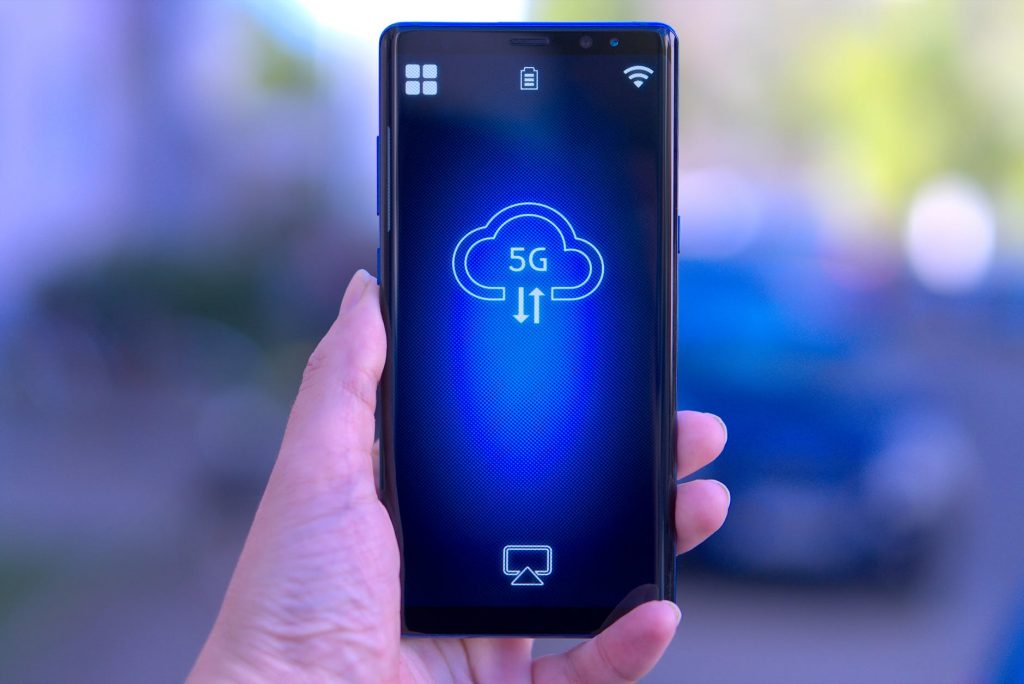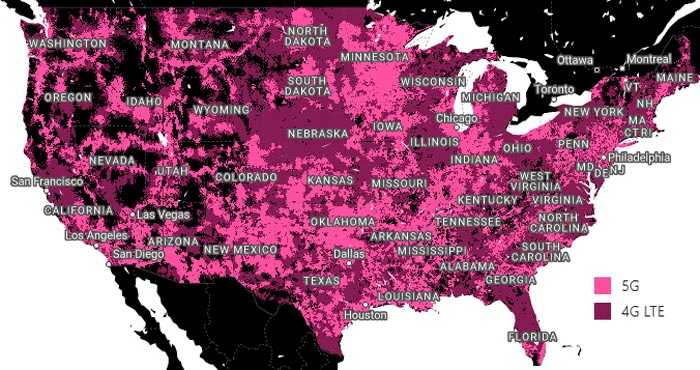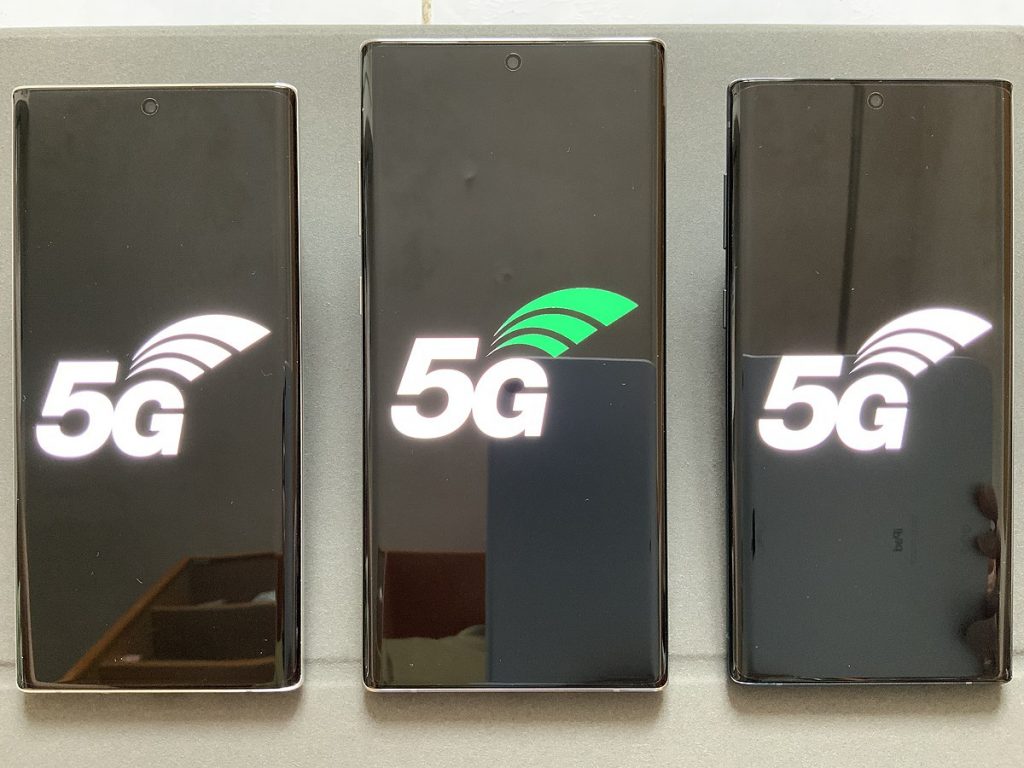5G is defining the technology of the 2020s. It’s a significant investment into the next decade and a big competition among countries around the world trying to be number one in rollout and adoption.
5G will be the anchor of a vast range of innovations from driverless cars to Internet-of-Things style home products and much more.
You’ve probably heard a lot about 5G. It’s already made its debut in cities around the world. Along with this, the big four carriers (AT&T, Verizon, T-Mobile, and Sprint, have already deployed the technology in markets around the country.
Read on to learn more about 5G, how it will change things, and what the technology means for you both now and in the future.

What is 5G?

5G stands for the fifth-generation cellular network used for mobile communication. It not only will bring faster download speeds but will improve latency (increasing responsiveness) and be able to connect many more devices simultaneously.
The technology behind 5G is immensely complicated, involving cellular tower enhancements, various radio frequencies, and more. The best way for consumers to understand it is by comparing it to 4G.
The first 4G phones came out in 2010. But standardization of 4G and mass adoption of the technology took a few years. The same goes for the primary application of 4G, which tech took time to develop.
Apps like Snapchat and Uber gained widespread use in 2012 and 2013, respectively. Video calls over LTE also became popular at this time. Likewise, we can predict significant changes will occur as the technology reaches mass adoption. But we can’t be sure what’s going to be the next killer app and what might disappear in no time.
What Changes Will 5G Bring?

It’s hard to predict precisely how 5G will change things. In 2009, nobody could have predicted a technology like Uber redefining transportation. However, technology researchers have long predicted the 5G is the key to the Internet-of-Things (IoT).
IoT technology is already all around us. From smart thermostats and lights to virtual assistants like Alexa and Siri, you probably have had some experience with it.
These types of lower-level IoT applications will continue to increase as more products are connected to the internet. Eventually, you’ll be able to use your smartphone to program just about anything in your home.
But 5G has even more significant implications for genuinely radical technologies. 5G is the key to self-driving vehicles. Google, Tesla, and other companies already have had successful launches of safe, self-driving cars.
But with 5G, these vehicles will be able to not only drive as they do now, but interact with each other, traffic lights, and other networks to create extremely safe and efficient vehicles.
Self-driving vehicles are just one aspect of 5G technology. It also will be used in artificial intelligence to immersive education experience, industrial applications, and more. Just as the internet has touched every aspect of life, so too will 5G.
When Will 5G By Everywhere?

We’re at the very beginning of the 5G revolution. You once again need to compare it to 4G. In the beginning, few people had 4G enabled devices. And since networks weren’t very extensive, you often bounced back and forth between 3G and 4G networks.
In the same way, 5G technology will continue to improve. Just as 4G has evolved into LTE and Gigabit LTE, so too will 5G continue to grow in speed.
Most countries have set targets of around 2023. The goal is to have between 90-97% rollout and availability, depending on the location.
Not All 5G is the same: Low, Middle, and High

5G gives carriers more options in terms of airwaves that can distribute cell services. 5G can operate on three different frequencies—low, middle, and high. Each of these creates a different experience for users.
Low-Band 5G
Low-band 5G uses frequencies below 1GHZ. These were old cellular and TV waves. These are vast channels that can travel large distances, but the trade-off is that they are slow. They will act and feel a lot like 4G (for now, though this may change if spectrum clears up).
The advantage to Low-band 5G is you can get signal in places you previously couldn’t with 5G. Right now, AT&T and T-Mobile use low-band.
Speeds: Low-band 5G tops out around 224 Mbps. This is about 6-7 times faster than average 4G speeds in the US today.
Mid-Band 5G
Mid-band 5G is between 1-10 GHz. Most current cellular and WiFi networks use these frequencies (think of your router). These have a decent range of about half a mile from towers. In countries aside from the US, these will be the backbone of most 5G traffic.
Currently, only Sprint has available spectrum for mid-band. However, there may be auctions that will free up more of the airwaves.
Rural networks will be a mixture of low and mid-band. This is one of the main aspects of the merger between Sprint and T-Mobile, which will allow the two companies to expand coverage in this range greatly.
Speeds: the US is focused on High and low-band deployment. Other countries like South Korea and Switzerland, where users see an average speed of around 1 Gbps or 30-35 Times faster than average 4G speeds in the US today.
High-Band 5G (millimeter-wave)
This is the really new technology that people are most excited about and will bring the fastest speeds. Since these airwaves have never been used for consumer applications like TV stations or cell signals, there are large amounts of available spectrum.
These signals travel at breakneck speeds. The trade-off, however, is that they have a short range of about 800 feet.
These types of signals have never been used on consumer devices because processing power and miniaturized antennas weren’t available. Also, cellular providers have to use many more, but smaller base stations to offer high speeds.
Speeds: 1-2 Gbps increasing over time up to 100 Gbps.
What Does This Mean for Me?
Don’t worry; if this is starting to make your head spin, it’s really not as confusing as you think. Smartphone makers like Samsung, Apple, Huawei, and others are figuring this out for you.
The most important thing is you’ll want a device that can handle both high and low-band 5G so you can take advantage of both blisteringly fast speeds and larger coverage distances.
Do I Need to Upgrade to 5G Now?

The first 5G phones have been available since 2019. The problem for most consumers is that they cost between $1000-1500 and don’t utilize both low and high-band 5G.
2020 will be the first significant release of 5G phones that both utilize the different bands and are priced between $600-1000. Apple is also poised to release at least one and possibly several different 5G compatible iPhones.
So, this begs the question, should you upgrade to 5G now? The answer is a little complicated. 4G LTE technology is faster and in more places than ever. It will also continually be improved alongside 5G over the next few years.
There’s no reason you shouldn’t buy a new phone that is only 4G compatible. You’ll get high speeds, your phone will be useful for years, and will be significantly cheaper than any 5G phones currently available. 4G technology is at its peak in terms of efficiencies, speeds, design, and price.
Likewise, the initial phases of 5G aren’t going to blow your mind. It’s what will happen over the next few years. If your phone is on its last legs, there’s no reason not to get a new iPhone, Samsung, or other devices that may not be 5G compatible.
On the other hand, if you can hold out until the price drops and the technology becomes more widespread in late 2020 and early 2021, then that will be the right time for you to upgrade to a 5G phone.
Which Carriers Have the Best 5G?

Right now, T-Mobile has the largest 5G network that reaches over 200 million Americans. However, this is slower than a low-band 5G.
Verizon has the fastest 5G network, but this is high-band and limited to urban centers. Keep an eye out on carrier rollout as these numbers will change quickly.
To access Verizon’s 5G network, you can add it by paying $10 more per month (though this is fee is generally waived). T-Mobile’s 5G plans can be accessed through its Magenta (a.k.a. standard) plan with compatible devices.
The Bottom Line: What is 5G?

5G is going to be a revolution in technology. It’s much more than just faster download speeds on your phone. 5G will bring about better connectivity, latency, and drive the development of new ideas and technology through the 2020s and into the future.
The most significant change to phones you can expect isn’t how fast you stream Netflix, but advancements in virtual and augmented reality. Phones will gradually shift into devices that enable an internet-augmented world when and where you want it. Look at these changes, and more as 5G becomes more and more widespread across the globe.
Discover more about 5G and cellular networks on the Buyback Boss Blog. There we’ve covered all the differences in the major US cellular carriers. You can learn more about T-Mobile, Verizon, and decide which is the best cellular provider for your needs.






